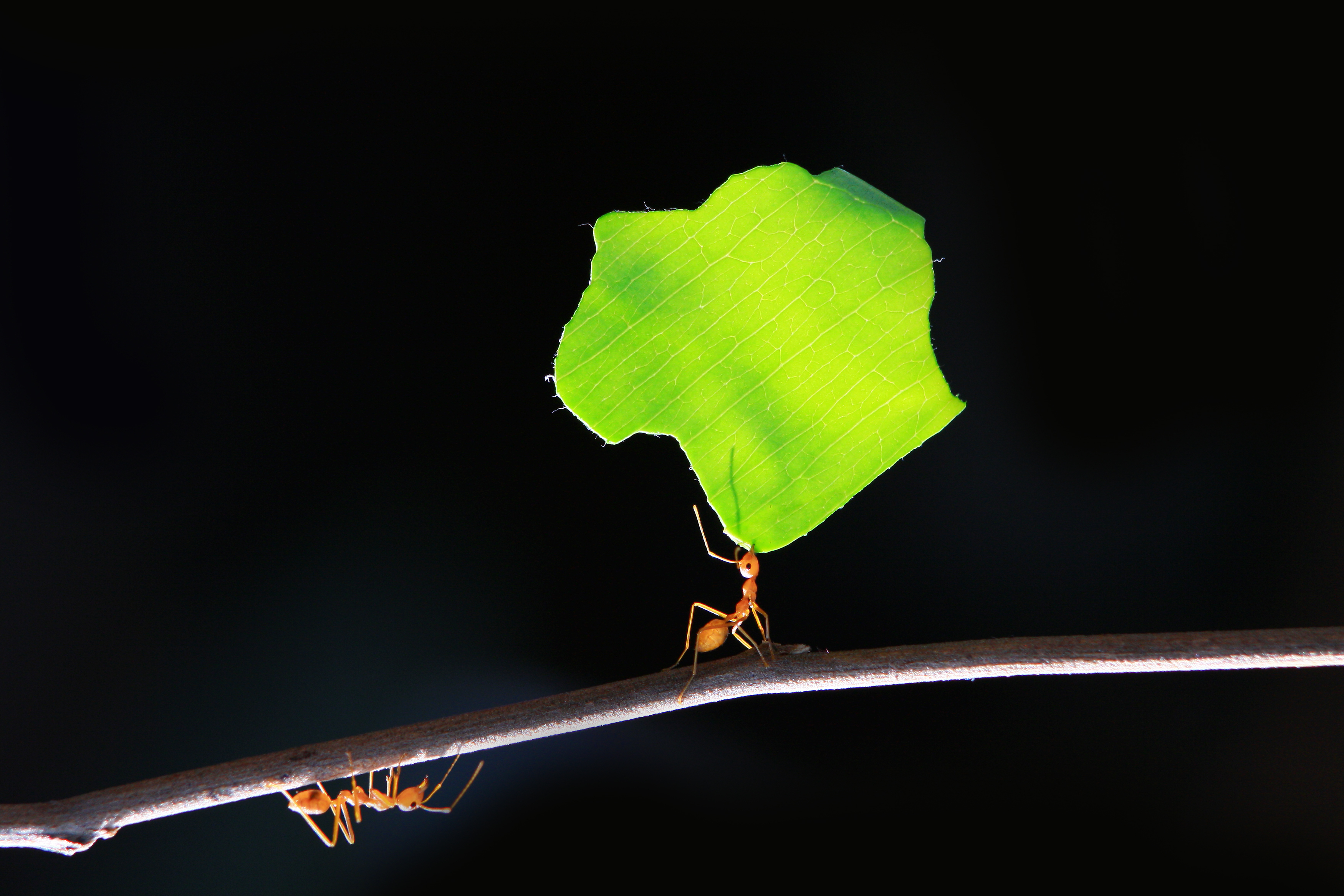
It’s a tough old world out there for the honeybee, which exhausts itself for 60 hours a week to produce just a thimbleful of honey. Indeed, you’d be surprised how hard some members of the animal kingdom have to work just to survive, and they’re not exactly taking sick days or going on holiday between shifts either. This Labour Day, let’s give a few industrious creatures like the hummingbird and even the lowly earthworm their due praise and recognition. Here are eight of nature’s hardest workers.
1. Arctic Tern

Photo by Tony Brindley
No other animal in the world has quite as epic a migration journey as the arctic tern, which will fly between 12,000 and 50,000 miles in 90 days, zipping across the globe from Greenland to Antarctica with the change of seasons. This four-ounce bird doesn’t even get that long to rest before it’s time to head back, spending around six months of every year in the air. In its 20-year lifetime a single arctic tern racks up around 1.5 million miles of travel—and you thought that jog around the park the other day was a long way!
2. Shrew

American homeowners may not be too happy about what burrowing shrews do to their lawns, but we have to give these mouse-like subterranean mammals a little respect: they almost never stop moving. Due to their unusually fast metabolism, shrews have to continuously search for food at all times, consuming up to three times their weight in insects, worms and other small animals every day. If they stop, they can die of starvation within three hours.
3. Honeybee

Photo by sumikophoto / Shutterstock
A worker bee is any female bee lacking the full reproductive capacity of a queen—she’ll spend on average 10 hours-per-day, six days a week travelling to around 8000 flowers to gather up nectar, carry it back to the hive and store it in wax cells, where it will eventually evaporate into honey. But all that effort only produces just about a thimbleful of the sticky golden goodness. While she’s sucking up the nectar, she’s also filling pollen baskets on her back legs, which she brings back as food for the developing brood. These hard-working bees also work constantly to maintain the right temperature within the brood area of the hive, collecting water and fanning the air with their wings to cool it off when it gets too hot.
4. Ants

Photo by claffra / Shutterstock
Not only do ants often lift objects weighing as much as 50 times their own body, carrying these loads all the way back to their nests, they also work together to perform tasks in incredibly efficient crews. Studies have found that various ant species construct complex societies, with groups performing tasks like building roads, collecting food, taking care of eggs and even ‘farming’ by pulling leaves into underground chambers in order to grow fungus. Some ants cut leaves until their jaws are completely worn down, some are in charge of sanitation and others form armies purely to defend their colonies from outside threats. Even the queen gets less rest than her grandiose title would imply, producing egg after egg until she dies.
5. Earthworms

Photo by lobster20 / Shutterstock
There’s nothing glamorous or pretty about the lowly earthworm, but without it we’d have a lot more work to do in the garden. These wriggling, deep-burrowing worms tunnel through the earth looking for food sources like decaying plant matter, nematodes, fungi and bacteria, and leave behind fertilising droppings as they go. This aerates the soil, allowing oxygen to reach the deepest roots of the plants growing overhead. Each day, they consume 30 to 50 percent their own body weight, and their presence in a healthy garden can turn up to 40 tons of earth per acre in a year.
6. Hummingbirds

Photo by Birdiegal / Shutterstock
Flapping their wings up to 50 times-per-second, hummingbirds need to feed almost constantly in order to maintain enough energy to stay in the air. Mother hummingbirds work even harder, spending weeks engineering nests with plant matter and bits of leaves bound by spiderweb so they’ll expand as their babies grow, all without the help of the fathers.
7. Beavers

Photo by Adwo / Shutterstock
Some of nature’s most talented architects, beavers must cut down and transport tree trunks in order to construct their own habitats, building elaborate dams, canals and lodges. The dams create calm, still pools of deep water to protect against predators and make it easier to float food and building materials back to their homes. They also store branches for use as food during the winter, eating the under bark. When enough branches are stacked to protrude from the surface, they accumulate snow, helping to insulate their lodges and prevent the water from freezing around the food pile.
8. Salmon

The thought of performing back-breaking labour up until the very moment of death is a frightening and depressing one for us humans, but for salmon, it’s a given. After enjoying a somewhat more carefree youth in the world’s Pacific and Atlantic oceans, they have to power back up their home river to the place they were first hatched, fighting strong currents and sometimes leaping up waterfalls in the process. This migration is so exhausting that once they spawn at their destination, their energy is entirely spent and they die—a total bum rap if ever there was one.
